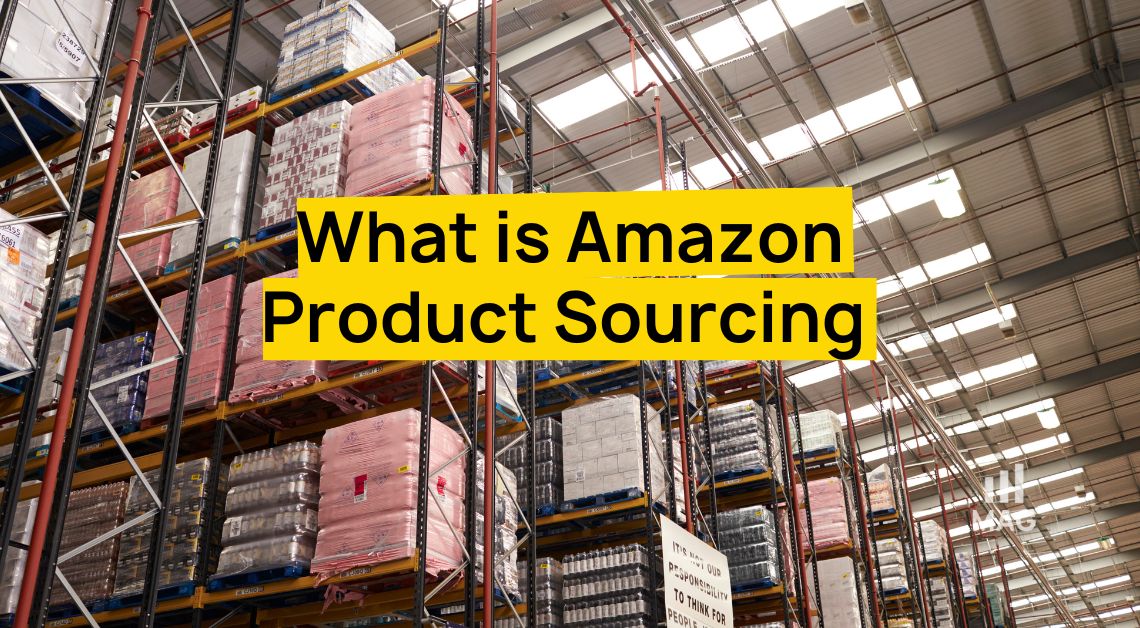Struggling with stockouts and overstocks despite your best efforts at inventory management?
Inventory management is important for a successful Amazon business.
Balancing stock levels to avoid both stockouts, which lead to loss of sales, and overstocks, which drain resources, is essential. Adding to the challenge is the complexity of managing multiple warehouses.
In this guide, we’ll look into the strategies to optimize inventory levels and coordinate your multi-warehouse operations to ensure seamless business operations.
Stockouts: The Hidden Threat to Your Sales
On Amazon, the top rule is to never run out of stock. Stockouts can be costly, often requiring two to three times your average ad spend to regain lost SEO rankings.
With the challenges of shipping delays and customs issues, smart inventory management is crucial.
Why Stockouts Happen
Even the most experienced Amazon sellers can fall victim to stockouts.
Here are the common reasons behind this sales-halting issue:
- Demand Forecasting Misfires: Perfectly predicting future sales is impossible, but inaccurate forecasts can leave you with empty shelves.
- Supplier Snags: Unexpected delays from suppliers can disrupt your carefully laid plans.
- Surprise Surges: Sudden unforeseen spikes in demand, perhaps due to a social media trend or events like Prime Day, can overwhelm stock levels.
Understanding these root causes enables sellers to take proactive steps to minimize the risk and impact of stockouts.
The High Cost of Stockouts
The consequences of stockouts extend beyond lost sales; they can have a cascading effect on your Amazon business. These repercussions include:
- Eroding Customer Trust: Out-of-stock products frustrate customers, damaging your brand reputation and potentially driving them to competitors.
- Search Ranking Decline: Amazon’s algorithm favors products with consistent availability. Stockouts can lead to lower search rankings, reducing product visibility.
- Missed Sales Opportunities: Each stockout represents lost revenue, impacting your overall sales performance and profitability.
- Increased Acquisition Costs: Regaining lost customers after a stockout often requires higher advertising costs to rebuild brand awareness.
Understanding the full impact of stockouts is crucial for developing effective prevention strategies to reduce the risk of stockouts.
Preventing Stockouts: A Proactive Approach
Proactive measures are crucial to minimizing stockouts. Consider the following strategies:
- Raise Prices Strategically: A gradual price increase (e.g., 10%) can help manage the remaining inventory without losing the coveted Buy Box. By slowing down sales, you can extend your supply.
- Utilize Automatic Replenishment Tool: Set up automatic replenishment alerts on Amazon to get notified when inventory is low. Amazon’s demand forecast tool, a free Seller Central feature, can help you set up automatic replenishment alerts to avoid unexpected stockouts.
- Pause Advertising: To avoid wasting ad spend on out-of-stock products, temporarily pause your PPC campaigns. Redirect your advertising efforts towards available items.
- Optimize Listing Visibility: Focus on maintaining an active product listing variation of the out-of-stock product to preserve the overall Best Seller Rank (BSR).
- Future Release Dates: For new products, strategically set future release dates to maximize initial excitement and sales. This can help manage inventory levels and create anticipation.
Implementing these strategies alongside proactive inventory management will help mitigate the effects of stockouts.
Have you experienced a stockout? Get clearer, actionable solutions by watching my video on how to handle stockouts.
Key Takeaways
- Price Adjustments: Tips on managing prices during stockouts.
- Ad Strategy: Why pausing ads is crucial.
- Pre-Sales Limitations: Alternatives to pre-sales on Amazon.
- Brand Registry: What it can and can’t do for stockouts.
- Listing Management: Whether to deactivate or keep your listing active.
- New Launches: Using future release dates effectively.
Overstocks: The Silent Drain on Profits
While preventing stockouts is crucial, it’s equally important to address the other side of the inventory management spectrum: overstocking.
Overstocks can be as damaging to your Amazon business as stockouts. Excess inventory ties up valuable capital, inflates operational costs, and risks product obsolescence.
Common Causes of Overstocking
Several factors contribute to overstocking, often stemming from poor inventory management practices:
- Mismanagement of Inventory Reports: Failing to fully utilize Amazon’s inventory performance reports and disregarding key metrics like excess inventory and recommended restocking quantities can lead to overstocking.
- Ignoring Optimal Stock Levels: Maintaining excessive inventory without considering sales data and demand patterns can result in overstocking and increased storage costs.
- Inadequate Promotional Planning: Overestimating demand during promotions without adjusting inventory levels accordingly can lead to surplus stock and wasted resources.
- Neglecting Inventory Performance: Failing to monitor your Inventory Performance Index (IPI) score can result in poor inventory management, potentially causing overstocking and exceeding Amazon’s storage limits.
- Overloading Inventory for Peak Periods: Shipping excessive inventory in anticipation of high-demand periods without accurate sales forecasts can lead to overstocking and increased costs.
Identifying these common issues can help sellers develop strategies to avoid overstocking.
Impact of Overstocking
Carrying surplus inventory can have severe financial and operational consequences for your Amazon business. Here are the consequences you might encounter:
- Increased Costs: Excess inventory leads to higher storage fees, increased labor costs for handling products, and potential write-offs for damaged or obsolete items.
- Cash Flow Constraints: Tied-up capital in unsold products limits your ability to invest in other business areas such as marketing, product development, or even daily operations.
- Operational Challenges: Overstocking can disrupt warehouse operations, leading to inefficiencies and increased handling time.
- Product Risks: Excess inventory is more susceptible to damage, theft, or becoming obsolete due to changing market trends or product life cycles.
- Lost Opportunities: Capital invested in overstocked products cannot be allocated to profitable ventures, hindering business growth and expansion.
Understanding these consequences is crucial for effective inventory management to avoid overstocking.
Reducing Overstocks: Key Strategies
To prevent overstocking from draining your profits, consider these strategic approaches:
- Optimize Inventory Levels: Strive for a delicate balance between having sufficient stock to meet customer demand and avoiding excess inventory that ties up capital and increases storage costs. By carefully analyzing sales data, market trends, and patterns, you can determine the optimal stock levels for your products.
- Make Use of Data Insights: Utilize Amazon’s inventory management software reports to gain valuable insights into product performance, sales velocity, and excess inventory.
- Prioritize High-Performing Products: Focus on restocking top-selling products to maximize your return on investment. By allocating inventory to products with proven sales history, you can reduce the risk of overstocking slow-moving items.
- Monitor Inventory Health: Keep a close eye on your Inventory Performance Index (IPI) score. A healthy IPI score indicates efficient inventory management and helps avoid storage limitations imposed by Amazon.
- Plan for Seasonal Fluctuations: Adjust inventory levels based on seasonal trends to prevent overstocking during slower periods and stockouts during peak seasons.
- Continuous Review and Adjustment: Regularly review and adjust your inventory levels to adapt to market fluctuations and customer demand.
Implementing these strategies can make you reclaim your inventory investment and optimize your Amazon business.
Multi-Warehouse Coordination: The Balancing Act
As you manage both stockouts and overstocks, it’s crucial to consider the impact of your warehouse strategy on inventory management.
Managing inventory across multiple warehouses and fulfillment centers adds complexity to inventory management and requires robust systems to keep track of stock levels accurately.
Proper coordination can enhance efficiency, reduce costs, and improve customer satisfaction.
Benefits of Multiple Warehouses
Having multiple warehouses offers several advantages:
- Reduced Shipping Costs: Storing inventory closer to key customer regions can lower shipping expenses.
- Faster Delivery Times: Strategically placed warehouses allow for quicker delivery, enhancing customer satisfaction.
- Risk Mitigation: Diversifying inventory across locations reduces the impact of regional disruptions like natural disasters or political issues.
- Scalability: Multiple warehouses support business growth by accommodating increased inventory and expanded geographic reach.
These benefits highlight the importance of effectively managing a multi-warehouse network.
Challenges of Multi-Warehouse Management
While the advantages are significant, managing multiple warehouses comes with its own set of challenges:
- Complex Inventory Tracking: Maintaining accurate stock levels across various locations can be difficult without a robust system.
- Increased Operational Costs: Multiple facilities entail higher operational expenses, including staffing, utilities, and maintenance.
- Coordination Issues: Ensuring smooth coordination between warehouses requires effective communication and integrated processes.
- Inconsistent Customer Experience: Variability in inventory availability and shipping times across locations can affect customer satisfaction.
Recognizing these challenges is essential for developing strategies to overcome them.
Inventory Allocation Strategies
Effective inventory allocation strategies can help manage stock levels across multiple warehouses:
- Demand Forecasting: Analyze historical sales data and market trends to predict future demand and allocate inventory accordingly.
- Reorder Point Formula: Calculate reorder points for each warehouse to maintain optimal stock levels and prevent stockouts.
- ABC Analysis: Categorize inventory based on importance and turnover rates to prioritize allocation efforts.
- Safety Stock Levels: Maintain safety stock at each location to buffer against demand variability and supply chain disruptions.
These strategies ensure balanced inventory distribution and improved stock availability.
Transfer Optimization
Optimizing inventory transfers between warehouses can enhance efficiency:
- Real-Time Inventory Visibility: Use real-time tracking systems like Seller Assistant to monitor stock levels and identify transfer needs promptly.
- Automated Replenishment: Implement automated systems to trigger stock transfers based on predefined criteria, such as low inventory thresholds.
- Cost-Efficient Transfers: Evaluate transfer costs and choose the most cost-effective methods to move inventory between locations.
- Centralized Management: Utilize a centralized inventory management system to coordinate transfers and maintain data consistency.
Optimized transfers ensure inventory is in the right place at the right time, reducing stockouts and overstocks.
Technology Solutions
Making use of technology is essential for streamlining multi-warehouse operations and optimizing inventory management. Consider implementing the following solutions:
- Warehouse Management Systems (WMS): Automate inventory tracking, order fulfillment, and warehouse processes for enhanced efficiency and accuracy.
- Inventory Management Software: Gain a unified view of stock levels across multiple warehouses for better decision-making.
- Data Analytics: Utilize data-driven insights to analyze sales patterns, predict demand, and optimize inventory allocation.
- IoT Devices: Implement real-time monitoring of inventory conditions and automated data collection for improved visibility and control.
Confused about which inventory management software to choose? Watch this in-depth video walkthrough created by our Amazon agency to see Veeqo in action.
- Unified Inventory Management: Seamlessly manage inventory across multiple sales channels.
- Streamlined Order Fulfillment: Simplify and accelerate your order processing.
- Shipping Integration: Connect easily with popular shipping carriers.
- User-Friendly Interface: Enjoy intuitive navigation and powerful reporting features.
Mastering Amazon Inventory Management
By addressing each of these aspects comprehensively, sellers can create a robust inventory management system that prevents stockouts, minimizes overstocks, and ensures efficient multi-warehouse coordination. These strategies are key to driving better business outcomes on Amazon, leading to sustained growth and profitability.
Ready to take your inventory management to the next level? Schedule a coaching call with our experts to discuss your specific challenges and explore tailored solutions.









